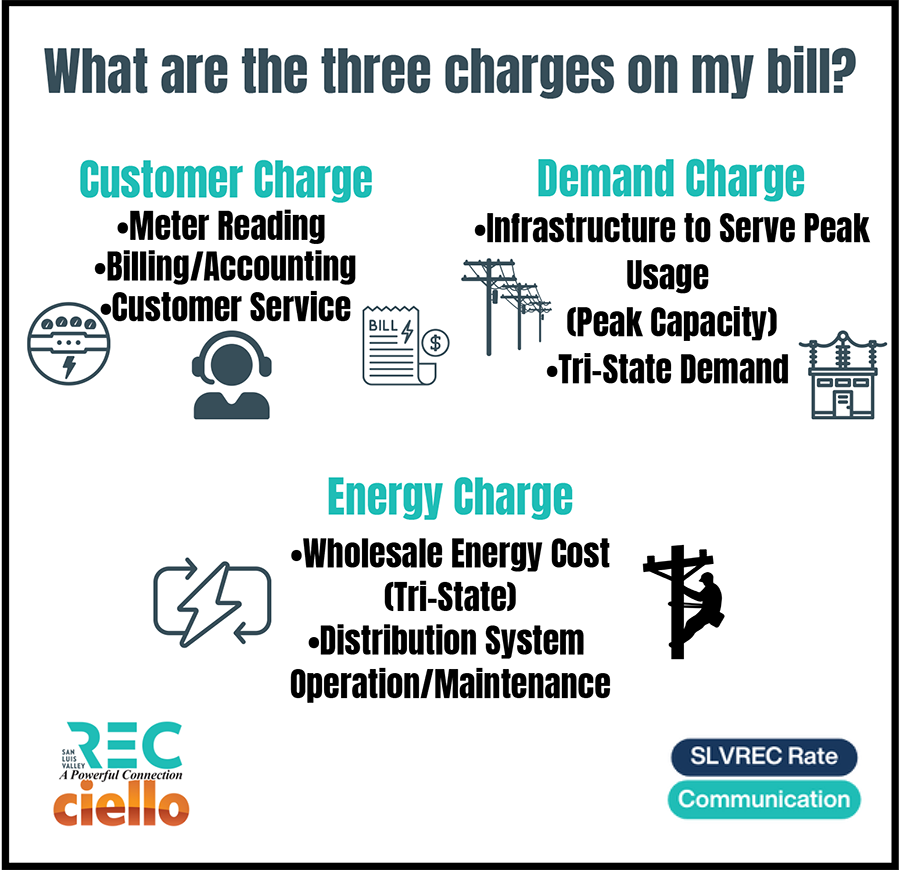Rate Design by Eric Eriksen
The electric utility rate making process consists of three parts:
1. Cost of Service Study
2. Revenue Requirement Study
3. Rate Design
In previous Newsboys we’ve reviewed the first two steps in the utility rate making process known as a Cost-of-Service Study and Revenue Requirement study. These two studies provide data to know how to allocate costs based on member power usage patterns and how much total revenue is required to pay our bills. In this month’s Newsboy edition, you’ll learn about the last step in the rate making process called Rate Design.
Here are the four guiding principles we follow in Rate Design:
1. Rates should be just and reasonable.
2. Members should pay for the costs that they impose on the electric system.
3. Fixed costs are recovered through fixed charges.
4. Variable costs are recovered through variable charges.
As a member, I should expect that my monthly electricity bill is accurate and only includes costs for the services received— no more, no less. This is the foundation for the four guiding principles we follow. An independent rate design expert and an independent financial audit team is used to ensure adherence to these principles. After carefully reviewing the cost-of-service and revenue requirement studies, they present their findings and recommended rate design before the SLVREC Board of Directors. Upon thorough review and acceptance, the Board approves the new rate design with a majority vote. This whole rate design process may take up to a full year to complete and is costly. To mitigate this expense our practice is to perform this study about every three years.
Technology is improving our ability to deliver more accurate monthly bills for you. However, this also increases the amount of detailed information on the bill. Historically, member monthly electric bills consisted of two parts: customer charge and energy charge— the customer charge for fixed expenses and the kilowatt-hour energy charge for variable expenses. This was the limitation of our electromechanical meters of the day. Then about 10 years ago metering improved to solid-state electronic technology with more capabilities. We refer to these modern meters as AMI or Advanced Metering Infrastructure. It took a couple years to deploy this technology followed by data collection and studies. This eventually resulted in implementing a three-part electric bill in 2019 to SLVREC members: customer charge, energy charge, demand charge. A three-part electric bill is much more accurate than a two-part bill.
Today, we use a three-part rate design to better ensure each member only pays for the costs they impose on the electric system.

As technology continues to improve so will the rate design. Already some utilities are starting to experiment with a four-part rate, which will likely become a new standard of excellence in the next 10 years.
The SLVREC team has developed a “rate calculator” that’s recently been added to our website (SLVREC Rate Calculator) to help you learn more about your electric bill and experiment with energy usage. Are you thinking about installing energy-efficient lights or maybe adding a hot tub to your home? First consider experimenting with the electric rate calculator tool online to help you make an informed decision.
We’re here whenever you need us. Connect with us online, in person, or through our social media channels. However, you choose to connect, please let us know how we can serve you better.
